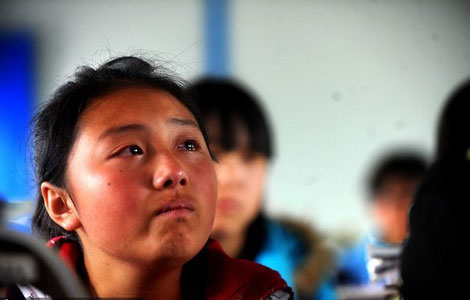How to tap into 'gray' market in China
Updated: 2013-08-12 13:54
By Mike Bastin (China Daily)
|
|||||||||||
China's demographic makeup will change - and soon. It will resemble less and less the age distribution found in other similarly developing nations such as neighboring India. Foreign companies, therefore, will need to re-evaluate their product and brand portfolios very carefully.
The market size and growth rate of the younger, typically 18 to 35 age group, will prove less and less attractive and will be soon outnumbered by aging generations.
It is estimated that by about 2038 there will be as many people over the age of 65 in China as there will be under the age of 20. Moreover, post-2038, older Chinese will outnumber younger ones.
Foreign companies and their marketers who can gain an understanding of the lifestyles and buyer behavior of these older generations should do well. But simply extending their product and brand portfolios with similar positioning and marketing will lead to failure.
Although many of China's senior citizens buy many of the brands desired by their younger counterparts, it is estimated that only 10 percent of these products are actually targeted directly at older generations. There is huge potential, therefore, for foreign companies.
So, how to tap into this vast and growing demographic group?
Positioning is crucial. Older Chinese people remain "traditional" in comparison with the modernity of China's youth. Such traditional values should lead to brands positioned as "nostalgic" and "nationalistic", supported by marketing and advertising campaigns that aim to portray China's rich culture and history.
However, my research confirms that, while older generations remain more traditional - that is, nationalistic and respectful of the past - they also share the desire for fun, adventure and excitement that motivates much of the younger generations' behavior.
It is, therefore, a careful fusion of these traditional and modern values, with the traditional at the fore, that should appeal to China's gray market.
A subtle shift in favor of traditionalism is, therefore, necessary to position the very same brand successfully in the minds of this older group in comparison with China's 18 to 35 year olds.
To achieve such a successful fusion, implementation of the dual or double brand name strategy often employed successfully in China, and elsewhere, will be helpful. Two brand names are presented to the market here, one often the corporate brand name. Lenovo's Thinkpad and Mengniu's Telunsu are current examples.
For older generations, the corporate brand name should dominate (source-branding) and evoke the traditional values discussed earlier. But, at the same time, a more modern, fresh and exciting product name is also important as older people move toward emotional consumption and a varied lifestyle. For younger generations, the product brand name resonates more, while the corporate brand name remains an important endorsement.
The author is a visiting professor at the University of International Business and Economics in Beijing and a researcher at Nottingham University's School of Contemporary Chinese Studies. The views do not necessarily reflect those of China Daily.
Related Stories
An aging population leads to a university exchange 2013-07-22 11:18
China under pressure to cover aging population 2013-06-24 19:27
Aging China faces financial pressure 2013-06-24 19:27
Higher age for retiring urged 2013-04-09 07:44
Today's Top News
Snowden's father gets visa, to leave for Russia soon
New green policy gives industries a big boost
Northeast China braces for major floods
Launches highlight India's ambitions
Chinese put on alert in Afghanistan
Social media counters papers
China to boost green industries
Go-between helped to cement key tire deal
Hot Topics
Lunar probe , China growth forecasts, Emission rules get tougher, China seen through 'colored lens', International board,
Editor's Picks

|

|

|

|

|

|





